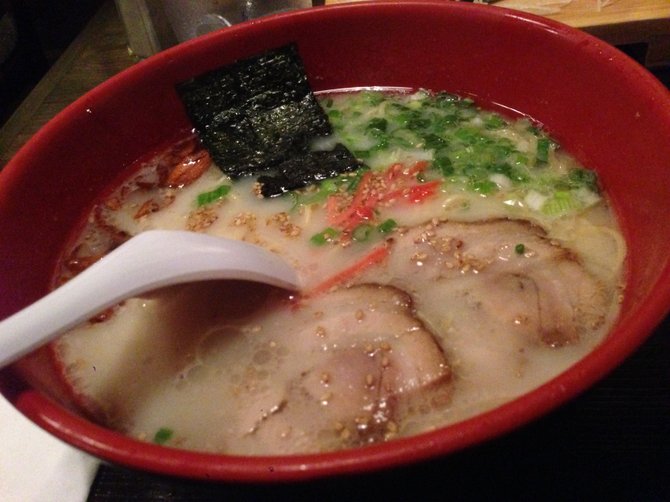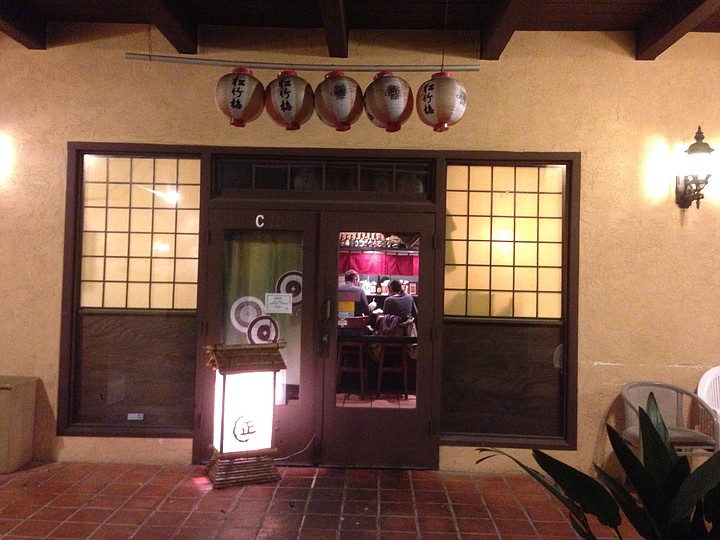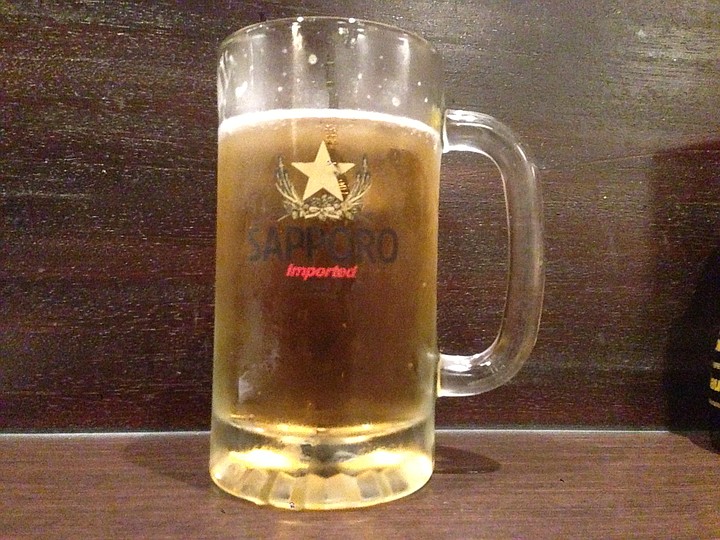 Facebook
Facebook
 X
X
 Instagram
Instagram
 TikTok
TikTok
 Youtube
Youtube

If you lived in Japan, any local place you can think of with the words "Public House" in its name would be called an izakaya instead. The relatively casual type of Japanese restaurant may basically be counted on to serve drinks and food, and in San Diego we have several establishments bearing the izakaya name: Sakura, Ouan, Shimbashi.

However, few dispute that Izakaya Masa sits square at the top of the list.
In fact, while the place is tucked off street in the ignominious back corner of a tiny Mission Hills office building, you'll probably find a crowd of customers waiting for a table around dinnertime, and even around late dinnertime.
Izakayas are typically known to cater to an after-work crowd, but if you ask me, the best thing about Masa is that it's open til 1 a.m. This means it provides three of the most satisfying words in known to the after bar crowd: late night ramen.

We're all well on our ways towards becoming ramen snobs these days, undoubtedly fed by a shared yearning to redeem the hideous number of instant noodle meals endured during those lean college days that put food and booze at odds with each other.
Now that we can afford to buy both beer and noodles in broth, we demand only the best ramen — provided it stays under ten bucks.
Masa gives you all kind of ramen options, beginning with small, medium and large, topping out at 9 dollars.
More pertinent are the flavor options: shoyu, shio and hakata. Shoyu and shio refer to soy sauce and salt flavoring, respectively. All three are said to employ the pork marrow-based broth tonkotsu (with two O's; not to be confused with the breaded pork cutlet, tonkatsu, with an A).
However, it's the hakata-style ramen of Fukuoka prefecture that I wanted.

I know this because I googled "Fukuoka" after seeing the name pop up around the restaurant in between Japanese tchotchkes and artwork written mostly in kanji.
Point is, the hakata style, hailing from Fukuoka, provides a richer tonkotsu flavor, bolstered by garlic and sesame oil in addition to thin slices of cha-shu pork. And that's exactly what my ramen craving craves.
I ordered a medium with a pint of Sapporo on draft and went to work trying to navigate between chopsticks (for noodles and pork) and a spoon (for that delicious broth).
I don't mean to offend any of the "chicken soup home remedy" people out there, but when I feel a cold coming on, give me tonkotsu every time. The pork broth sings to my insides like Etta James wrapped in a cashmere pashmina, curing any ills.
I won't get involved in any of the Best Ramen in Town arguments that turn up both online and between diners at the competing restaurants themselves. But I will credit Izakaya Masa with delivering a sincerely delicious rendition of a classic regional soup. Factor in the late-night vibe, an utter lack of affectation, and the fried garlic chips floating in the hakata broth, and Masa is still San Diego's izakaya champion.


If you lived in Japan, any local place you can think of with the words "Public House" in its name would be called an izakaya instead. The relatively casual type of Japanese restaurant may basically be counted on to serve drinks and food, and in San Diego we have several establishments bearing the izakaya name: Sakura, Ouan, Shimbashi.

However, few dispute that Izakaya Masa sits square at the top of the list.
In fact, while the place is tucked off street in the ignominious back corner of a tiny Mission Hills office building, you'll probably find a crowd of customers waiting for a table around dinnertime, and even around late dinnertime.
Izakayas are typically known to cater to an after-work crowd, but if you ask me, the best thing about Masa is that it's open til 1 a.m. This means it provides three of the most satisfying words in known to the after bar crowd: late night ramen.

We're all well on our ways towards becoming ramen snobs these days, undoubtedly fed by a shared yearning to redeem the hideous number of instant noodle meals endured during those lean college days that put food and booze at odds with each other.
Now that we can afford to buy both beer and noodles in broth, we demand only the best ramen — provided it stays under ten bucks.
Masa gives you all kind of ramen options, beginning with small, medium and large, topping out at 9 dollars.
More pertinent are the flavor options: shoyu, shio and hakata. Shoyu and shio refer to soy sauce and salt flavoring, respectively. All three are said to employ the pork marrow-based broth tonkotsu (with two O's; not to be confused with the breaded pork cutlet, tonkatsu, with an A).
However, it's the hakata-style ramen of Fukuoka prefecture that I wanted.

I know this because I googled "Fukuoka" after seeing the name pop up around the restaurant in between Japanese tchotchkes and artwork written mostly in kanji.
Point is, the hakata style, hailing from Fukuoka, provides a richer tonkotsu flavor, bolstered by garlic and sesame oil in addition to thin slices of cha-shu pork. And that's exactly what my ramen craving craves.
I ordered a medium with a pint of Sapporo on draft and went to work trying to navigate between chopsticks (for noodles and pork) and a spoon (for that delicious broth).
I don't mean to offend any of the "chicken soup home remedy" people out there, but when I feel a cold coming on, give me tonkotsu every time. The pork broth sings to my insides like Etta James wrapped in a cashmere pashmina, curing any ills.
I won't get involved in any of the Best Ramen in Town arguments that turn up both online and between diners at the competing restaurants themselves. But I will credit Izakaya Masa with delivering a sincerely delicious rendition of a classic regional soup. Factor in the late-night vibe, an utter lack of affectation, and the fried garlic chips floating in the hakata broth, and Masa is still San Diego's izakaya champion.
Comments